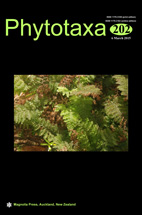Abstract
In this study, cyanobacterial assemblages were collected from the limestone cave Daveli (Attica, Greece) during an annual survey (2010–2011). Four sampling areas were selected from the cave entrance inwards, and the main abiotic parameters (PAR, T, RH) were measured at each site. A portion of the collected material was fixed with formaldehyde solution and another part was maintained alive for culturing and microscopic observations. XRD analysis was applied for analyzing the chemical composition of the limestone substrate. Microscopic observation (LM) revealed the presence of a wealth of Cyanobacteria including a brownish-violet colored filamentous morphotype with a large granulated ‘ocellus’ in the apical cell, features resembling the newly (2012) established genus Oculatella of the family Pseudanabaenaceae. This morphotype was isolated in unialgal cultures for a further morphological (SEM and TEM), molecular (16S rRNA) and biochemical analysis (FAME). The 16S rRNA sequence generated from the specimen revealed a 99% similarity with Leptolyngbya sp. VRUC135 (GenBank–X84809), a strain now recognized as the type species (Oculatella subterranea) of Oculatella. Taking a step forward, we proceeded to the determination of fatty acid composition by Gas Chromatography which revealed the dominance of palmitic acid (16:0) in all isolates followed by palmitoleic acid (16:1), linoleic acid (18:2), and oleic acid (18:1), while tridecylic acid (13:0), myristic acid (14:0), isomers of C15, C17, C20 and C22, stearic acid (18:0), linolenic acid (18:3), as well as an unknown fatty acid were found in traces. These new findings corroborate the establishment of the new genus Oculatella and provide information on the fatty acid composition of the species Oculatella subterranea.

